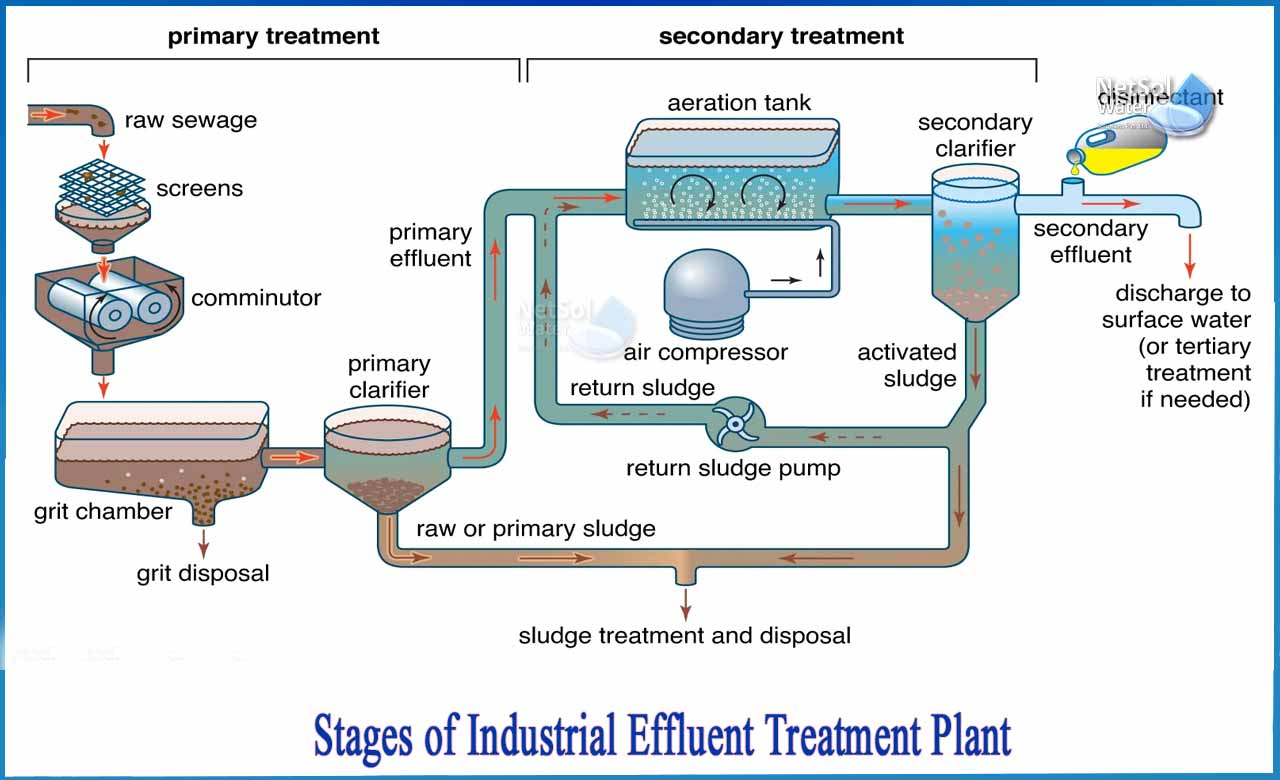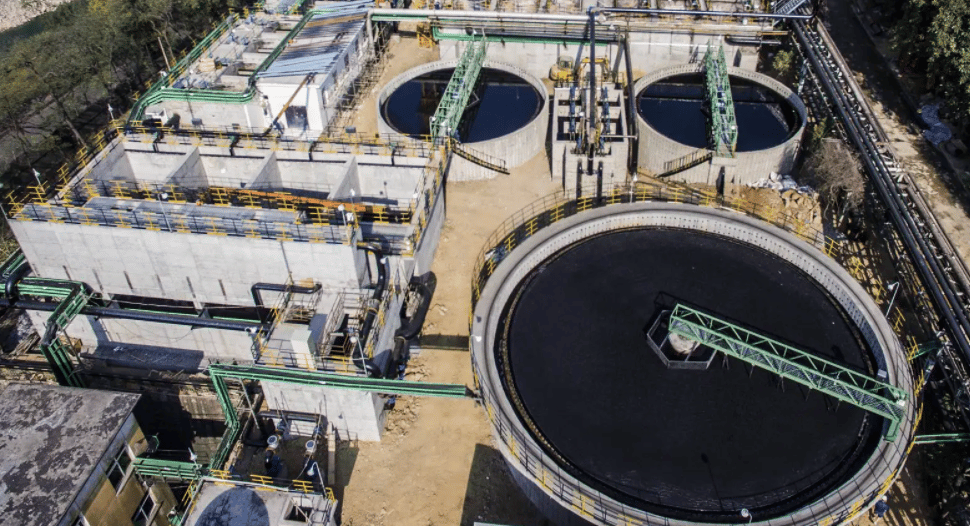Industrial Waste Water Treatment-- Industrial-Grade Water Filtration and Filtering Solutions
Secret Methods in Industrial Waste Water Treatment Procedures
The therapy of commercial wastewater is a crucial element of ecological monitoring, involving a range of techniques developed to alleviate the influence of impurities. Advancements in technologies such as membrane filtering and advanced oxidation processes provide ingenious options for boosting therapy effectiveness.
Physical Therapy Techniques
Exactly how successfully can physical treatment techniques attend to the complexities of industrial wastewater? Physical treatment methods play an essential role in the preliminary phases of wastewater management, concentrating mainly on the elimination of solids and big particulates. Methods such as flotation, filtration, and sedimentation are vital for decreasing the concentration of put on hold solids, thus enhancing the performance of succeeding treatment processes.
Sedimentation entails the gravitational settling of solids, enabling the splitting up of much heavier materials from the wastewater. This method is especially reliable in clarifying water prior to organic or chemical treatments. Purification, on the other hand, utilizes numerous media to catch particle issue, guaranteeing that smaller sized pollutants are removed. This strategy can be tailored to suit different sorts of commercial effluents, producing more clear effluent streams.
Additionally, flotation protection methods, which use air bubbles to raise suspended solids to the surface area for elimination, work in dealing with wastewater with high focus of fats, oils, and greases. On the whole, physical treatment approaches work as an essential initial step in the comprehensive administration of commercial wastewater, guaranteeing that the lots on subsequent therapy phases is reduced and improving total treatment effectiveness.
Chemical Therapy Techniques
While physical therapy methods prepared for efficient wastewater management, chemical therapy techniques are crucial for attending to the much more intricate contaminants often discovered in industrial effluents. These techniques make use of different chemical representatives to precipitate, reduce the effects of, or oxidize hazardous substances, making sure a more thorough removal of toxins.
One common technique is coagulation and flocculation, where chemical coagulants such as aluminum sulfate or ferric chloride are added to advertise the aggregation of suspended fragments. This process improves solid-liquid splitting up, reducing turbidity and enhancing water top quality. Additionally, neutralization processes are utilized to adjust the pH of wastewater, making use of acids or bases to reduce the effects of acidic or alkaline streams, specifically.
Oxidation-reduction responses play an essential function in derogatory natural contaminants and microorganisms. Chemical oxidants like chlorine, ozone, or hydrogen peroxide are used to damage down intricate natural substances, making them less unsafe or extra biodegradable. Advanced oxidation processes (AOPs) combine multiple oxidation techniques to enhance pollutant removal efficiency.
Biological Treatment Procedures
The effectiveness of wastewater therapy is significantly enhanced by organic therapy procedures, which harness the all-natural metabolic activities of bacteria to break down organic matter and remove pollutants. Industrial Waste Water Treatment. These procedures largely entail anaerobic and cardiovascular food digestion, each tailored for details sorts of wastewater
Aerobic treatment processes make use of oxygen to sustain microbial development, promoting the break down of organic pollutants right into co2 and water. Typical methods consist of turned on sludge systems, where aeration tanks promote the blending of wastewater with bacteria, and trickling filters, which urge biofilm advancement on media surfaces.
Conversely, anaerobic therapy processes occur in the lack of oxygen, utilizing anaerobic microorganisms to disintegrate raw material, leading to biogas production, an eco-friendly energy resource. Anaerobic digesters are commonly utilized in commercial settings for this function, properly minimizing the volume of sludge while generating important biogas.
The selection of an organic therapy technique depends on wastewater characteristics, treatment objectives, and regulative criteria. The combination of organic processes in wastewater therapy not only improves pollutant removal performance however additionally promotes sustainability by lessening chemical usage and supporting resource recovery.
Advanced Oxidation Processes

Usual AOP methods include Fenton's reagent, ozonation, and photocatalysis. Fenton's reagent, a combination of hydrogen peroxide and ferrous iron, militarizes the formation of hydroxyl radicals, making it efficient for treating wastewater including phenolic compounds and other recalcitrant materials. Ozonation uses ozone as an effective oxidant, efficient in breaking down a vast range of natural contaminants site while all at once decontaminating the effluent. Photocatalysis uses light-activated catalysts, such as titanium dioxide, to improve oxidation responses and remove impurities.
AOPs use several advantages, including minimized sludge manufacturing and the ability to deal with wastewater with high concentrations of natural toxins. The implementation of AOPs needs careful consideration of functional criteria and cost-effectiveness, guaranteeing that these advanced techniques are appropriately incorporated into existing wastewater therapy systems.
Membrane Layer Filtering Technologies

Microfiltration works for removing put on hold solids and germs, while ultrafiltration targets smaller organic molecules and viruses. Nanofiltration bridges the void between ultrafiltration and reverse osmosis, properly removing organic compounds and divalent ions. Reverse osmosis gives the highest degree of purification, made use of mostly for desalination and eliminating mono-valent ions.
Membrane layer innovations offer many benefits, consisting of reduced power usage contrasted to conventional therapy approaches, modular style for scalability, and the capacity for water recovery and reuse. Challenges such as membrane fouling and the requirement for normal maintenance should be addressed to ensure system efficacy. Overall, membrane layer filtering technologies stand for a vital component of contemporary industrial wastewater treatment strategies, promoting sustainability and resource conservation in water monitoring.
Final Thought
To conclude, industrial wastewater therapy employs a varied variety of strategies, including physical, chemical, organic, and progressed techniques. Each technique plays an important function in efficiently resolving different impurities, boosting water quality, and promoting source sustainability. The combination of these techniques promotes an extensive treatment technique, ensuring that commercial effluents satisfy regulatory standards while decreasing ecological effect. Proceeded developments in these websites methodologies will certainly further improve the efficiency and efficiency of wastewater treatment processes in industrial setups.
The treatment of commercial wastewater is a vital element of environmental monitoring, involving a variety of methods made to mitigate the effect of pollutants.Just how properly can physical therapy approaches address the complexities of industrial wastewater?Advanced oxidation processes (AOPs) stand for a sophisticated approach in industrial wastewater treatment, developed to successfully break down natural pollutants that are frequently resistant to traditional therapy approaches (Industrial Waste Water Treatment).In verdict, commercial wastewater therapy uses a varied selection of strategies, consisting of physical, chemical, organic, and progressed techniques. Proceeded improvements in these methods will certainly additionally enhance the effectiveness and efficiency of wastewater treatment processes in commercial setups